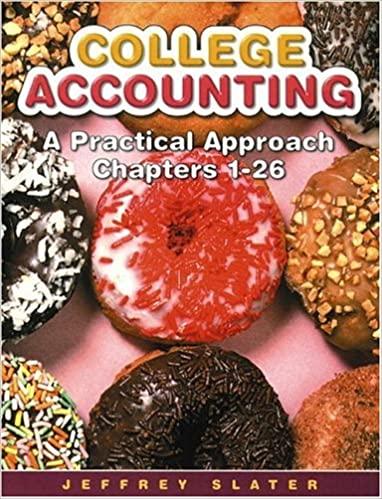Required information Use the following information for the Exercises below. [The following information applies to the questions displayed below.) Laker Company reported the following January purchases and sales data for its only product. Units sold at Retail Units Acquired at Cost 195 unitse $12.00 - $2,340 155 units @ $21.00 Date Activities Jan. 1 Beginning inventory Jan. 10 Sales Jan. 20 Purchase Jan. 25 Sales Jan. 30 Purchase Totals 120 units $11.00 - 1,320 135 units $21.00 290 units@ $10.50 - 605 units 3,045 $6,705 290 units The Company uses a perpetual inventory system. For specific identification, ending inventory consists of 315 units, where 290 are from the January 30 purchase, 5 are from the January 20 purchase, and 20 are from beginning inventory Exercise 5-3 Perpetual: Inventory costing methods LO P1 Required: 1. Complete the table to determine the cost assigned to ending inventory and cost of goods sold using specific identification 2. Determine the cost assigned to ending inventory and to cost of goods sold using weighted average. 3. Determine the cost assigned to ending inventory and to cost of goods sold using FIFO. 4. Determine the cost assigned to ending inventory and to cost of goods sold using LIFO. Complete this question by entering your answers in the tabs below. Required 1 Required 2 Required 3 Required 4 Complete this question by entering your answers in the tabs below. Required 1 Required 2 Required 3 Required 4 Complete the table to determine the cost assigned to ending Inventory and cost of goods sold using specific identification (Round cost per unit to 2 decimal places.) Specific Identification Available for Sale Cost of Goods Sold Units Sold Unit Cost COGS Unit Ending Inventory Ending Cost Per Ending Inventory Inventory Units Cost Purchase Date Units Activity Cost Unit Jan 1 Jan. 20 Jan. 30 Beginning inventory Purchase Purchase 195 120 200 605 D 0 o $ Renuired Required 2 > Complete this question by entering your answers in the tabs below. Required 1 Required 2 Required 3 Required 4 Determine the cost assigned to ending Inventory and to cost of goods sold using weighted average. (Round cost per unit to 2 decimal places.) Weighted Average . Perpetual: Goods Purchased # of Date units unit Cost of Goods Sold Cost per Cost of Goods unit Sold Inventory Balance Cost per Inventory # of units unit Balance Cost per units sold es 1950 $ 1200 $ 2,340.00 January 1 January 10 January 20 Average cost January 25 January 30 Totals Required 1 Required 2 Required 3 Required 4 Determine the cost assigned to ending inventory and to cost of goods sold using FIFO. (Round cost per unit to 2 decimal places.) Perpetual FIFO: Goods Purchased Inventory Balance # of units Date Cost of Goods Sold # of units Cost per Cost of Goods sold unit Sold Cost per unit Cost per # of units Inventory unit Balance $ 12.00 = $ 2,340.00 January 1 195 @ ces January 10 January 20 January 25 January 30 Totals Required information Required 1 Required 2 Required 3 Required 4 Determine the cost assigned to ending inventory and to cost of goods sold using LIFO. (Round cost per unit to 2 decimal places.) Perpetual LIFO: Goods Purchased # of units unit Cost per Cost of Goods Sold # of units Cost per Cost of Goods sold unit Sold Date Inventory Balance Cost per Inventory # of units unit Balance 195 @ $ 12,00 - $ 2,340.00 January 1 January 10 os January 20 January 25 January 30 Totals











